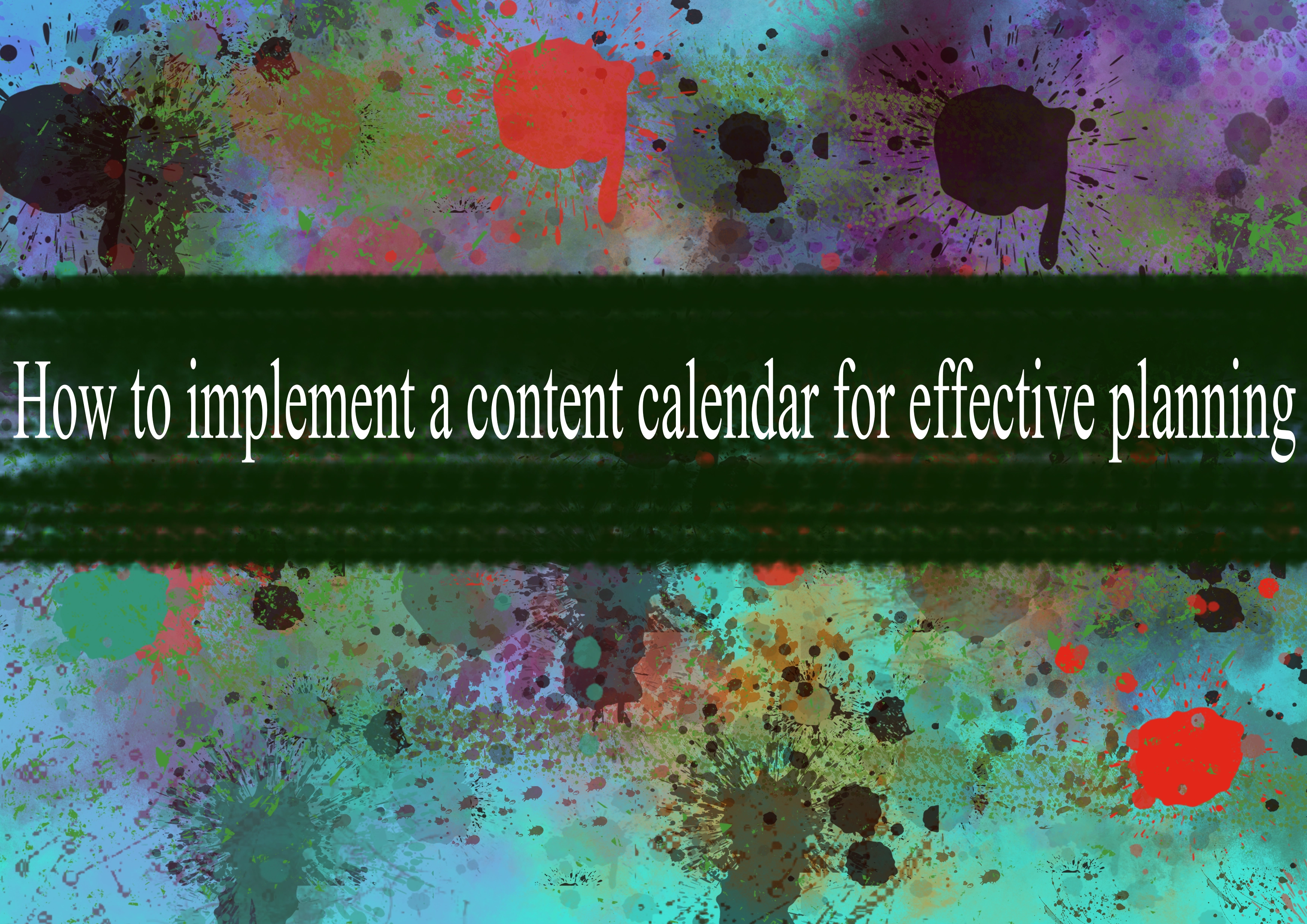How to implement a content calendar for effective planning

Creating a content calendar is a crucial step in organizing and planning your content marketing strategy. A well-thought-out content calendar helps you stay consistent, saves time, and ensures that your content aligns with your overall business goals. Here's a step-by-step guide to help you implement an effective content calendar:
Define Your Goals:
- Identify your business objectives and marketing goals.
- Determine the purpose of your content (brand awareness, lead generation, customer engagement, etc.).
Understand Your Audience:
- Define your target audience and their preferences.
- Consider the buyer's journey and create content that caters to each stage.
Choose a Content Calendar Tool:
- Use a tool that suits your needs. Options include Google Calendar, Trello, Asana, or dedicated content calendar tools like CoSchedule or Airtable.
Create a Template:
- Develop a consistent format for your calendar. Include columns for content type, topic, publication date, author, status, and distribution channels.
Identify Key Dates and Events:
- Highlight important dates, holidays, industry events, product launches, and other relevant occasions that may influence your content.
Brainstorm Content Ideas:
- Conduct regular brainstorming sessions to generate content ideas.
- Ensure your content aligns with your brand voice and resonates with your audience.
Develop a Content Creation Workflow:
- Clearly define the process from idea generation to publication.
- Assign roles and responsibilities for each stage of content creation.
Schedule Regular Content Meetings:
- Hold regular meetings to discuss upcoming content, review performance, and make adjustments to your strategy.
- Encourage collaboration and input from team members.
Balance Content Types:
- Diversify your content types (blog posts, videos, infographics, social media posts) to cater to different audience preferences.
- Ensure a mix of evergreen and timely content.
Optimize for SEO:
- Incorporate relevant keywords in your content.
- Ensure your content is aligned with your SEO strategy.
Include Promotion and Distribution:
- Plan how you will promote and distribute each piece of content.
- Consider social media, email marketing, influencer collaborations, and other channels.
Track and Analyze Results:
- Monitor the performance of your content using analytics tools.
- Evaluate metrics like engagement, traffic, conversion rates, and adjust your strategy accordingly.
Iterate and Improve:
- Regularly review your content calendar and assess its effectiveness.
- Be flexible and willing to adjust your plan based on feedback and changing circumstances.
Document Your Strategy:
- Keep documentation of your content strategy, including target audience personas, content guidelines, and key messaging.
By following these steps, you can implement a content calendar that aligns with your business goals, keeps your team organized, and ensures a consistent and effective content marketing strategy.
-
Popular Post
- How to optimize for Google's About This Result feature for local businesses
- How to implement multi-language support in an Express.js application
- How to handle and optimize for changes in mobile search behavior
- How to handle CORS in a Node.js application
- How to use Vue.js with a UI framework (e.g., Vuetify, Element UI)
- How to configure Laravel Telescope for monitoring and profiling API requests
- How to create a command-line tool using the Commander.js library in Node.js
- How to implement code splitting in a React.js application
- How to use the AWS SDK for Node.js to interact with various AWS services
- How to use the Node.js Stream API for efficient data processing
- How to implement a cookie parser middleware in Node.js
- How to implement WebSockets for real-time communication in React
-
Latest Post
- How to implement a dynamic form with dynamic field styling based on user input in Next.js
- How to create a custom hook for handling user interactions with the browser's device motion in Next.js
- How to create a custom hook for handling user interactions with the browser's battery status in Next.js
- How to implement a dynamic form with dynamic field visibility based on user input in Next.js
- How to implement a dynamic form with real-time collaboration features in Next.js
- How to create a custom hook for handling user interactions with the browser's media devices in Next.js
- How to use the useSWRInfinite hook for paginating data with a custom loading indicator in Next.js
- How to create a custom hook for handling user interactions with the browser's network status in Next.js
- How to create a custom hook for handling user interactions with the browser's location in Next.js
- How to implement a dynamic form with multi-language support in Next.js
- How to create a custom hook for handling user interactions with the browser's ambient light sensor in Next.js
- How to use the useHover hook for creating interactive image zoom effects in Next.js